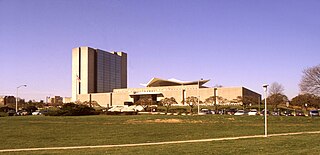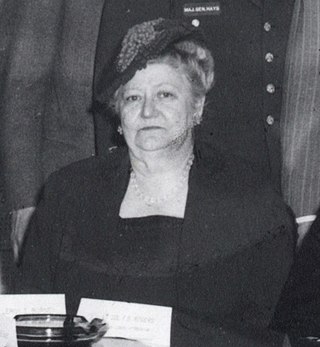Related Research Articles
The Bliss bibliographic classification (BC) is a library classification system that was created by Henry E. Bliss (1870–1955) and published in four volumes between 1940 and 1953. Although originally devised in the United States, it was more commonly adopted by British libraries. A second edition of the system (BC2) has been in ongoing development in Britain since 1977.
The Cutter Expansive Classification system is a library classification system devised by Charles Ammi Cutter. The system was the basis for the top categories of the Library of Congress Classification.

The Dewey Decimal Classification (DDC), colloquially known as the Dewey Decimal System, is a proprietary library classification system which allows new books to be added to a library in their appropriate location based on subject. It was first published in the United States by Melvil Dewey in 1876. Originally described in a 44-page pamphlet, it has been expanded to multiple volumes and revised through 23 major editions, the latest printed in 2011. It is also available in an abridged version suitable for smaller libraries. OCLC, a non-profit cooperative that serves libraries, currently maintains the system and licenses online access to WebDewey, a continuously updated version for catalogers.
The Library of Congress Classification (LCC) is a system of library classification developed by the Library of Congress in the United States, which can be used for shelving books in a library. LCC is mainly used by large research and academic libraries, while most public libraries and small academic libraries used the Dewey Decimal Classification system. The classification was developed by James Hanson, with assistance from Charles Martel, in 1897, while they were working at the Library of Congress. It was designed specifically for the purposes and collection of the Library of Congress to replace the fixed location system developed by Thomas Jefferson.

A library classification is a system used within a library to organize materials, including books, sound and video recordings, electronic materials, etc., both on shelves and in catalogs and indexes. Each item is typically assigned a call number, which identifies the location of the item within the system. Materials can be arrange by many different factors, typically in either a hierarchical tree structure based on the subject or using a faceted classification system, which allows the assignment of multiple classifications to an object, enabling the classifications to be ordered in many ways.

An academic discipline or field of study is a branch of knowledge, taught and researched as part of higher education. A scholar's discipline is commonly defined by the university faculties and learned societies to which they belong and the academic journals in which they publish research.

The United States National Library of Medicine (NLM), operated by the United States federal government, is the world's largest medical library.
Dot-decimal notation is a presentation format for numerical data. It consists of a string of decimal numbers, using the full stop (dot) as a separation character.
A faceted classification is a classification scheme used in organizing knowledge into a systematic order. A faceted classification uses semantic categories, either general or subject-specific, that are combined to create the full classification entry. Many library classification systems use a combination of a fixed, enumerative taxonomy of concepts with subordinate facets that further refine the topic.

Medical Subject Headings (MeSH) is a comprehensive controlled vocabulary for the purpose of indexing journal articles and books in the life sciences. It serves as a thesaurus that facilitates searching. Created and updated by the United States National Library of Medicine (NLM), it is used by the MEDLINE/PubMed article database and by NLM's catalog of book holdings. MeSH is also used by ClinicalTrials.gov registry to classify which diseases are studied by trials registered in ClinicalTrials.
A medical classification is used to transform descriptions of medical diagnoses or procedures into standardized statistical code in a process known as clinical coding. Diagnosis classifications list diagnosis codes, which are used to track diseases and other health conditions, inclusive of chronic diseases such as diabetes mellitus and heart disease, and infectious diseases such as norovirus, the flu, and athlete's foot. Procedure classifications list procedure code, which are used to capture interventional data. These diagnosis and procedure codes are used by health care providers, government health programs, private health insurance companies, workers' compensation carriers, software developers, and others for a variety of applications in medicine, public health and medical informatics, including:
The Current Procedural Terminology (CPT) code set is a procedural code set developed by the American Medical Association (AMA). It is maintained by the CPT Editorial Panel. The CPT code set describes medical, surgical, and diagnostic services and is designed to communicate uniform information about medical services and procedures among physicians, coders, patients, accreditation organizations, and payers for administrative, financial, and analytical purposes. New editions are released each October, with CPT 2021 being in use since October 2021. It is available in both a standard edition and a professional edition.
The Systematized Nomenclature of Medicine (SNOMED) is a systematic, computer-processable collection of medical terms, in human and veterinary medicine, to provide codes, terms, synonyms and definitions which cover anatomy, diseases, findings, procedures, microorganisms, substances, etc. It allows a consistent way to index, store, retrieve, and aggregate medical data across specialties and sites of care. Although now international, SNOMED was started in the U.S. by the College of American Pathologists (CAP) in 1973 and revised into the 1990s. In 2002 CAP's SNOMED Reference Terminology was merged with, and expanded by, the National Health Service's Clinical Terms Version 3 to produce SNOMED CT.
The International Classification of Health Interventions (ICHI) is a system of classifying procedure codes being developed by the World Health Organization (WHO). It is currently available as a beta 3 release. The components for clinical documentation are stable. The component on public health interventions is in the process of being finalized. Updates on development and status of the classification are listed on WHO home page.
Vehicle registration plates in Luxembourg bear a maximum of six characters. The standard series in use today uses a format of two letters followed by four digits. Before adoption of the current scheme, marks consisting only of digits and two digits and three numbers letters, were issued. The digit-only plates may only now be issued as a custom plate.

Mary Louise Marshall was Librarian and Professor of Medical Bibliography at Tulane University School of Medicine, and the longest-running president of the Medical Library Association (1941–46).

Julia Pettee was an American librarian best known for developing the Union Classification, used to classify theological books. Pettee served for thirty years as head cataloger of the Union Theological Seminary library and made fundamental contributions to cataloging theory and practice.
Superintendent of Documents Classification, commonly called as SuDocs or SuDoc, is a system of library classification developed and maintained by the United States Government Publishing Office. Unlike Library of Congress Classification, Dewey Decimal Classification, or Universal Decimal Classification, SuDocs is not a universal system. Rather, it is intended for use only with publications of the Federal Government of the United States. Also, SuDocs does not organize materials by subject, but by the agency that created those materials, making it a provenance-based or archival classification system.
References
Citations
- ↑ "Fact Sheet: NLM Classification". 2005-07-15. Retrieved 2007-05-12.
Sources
 This article incorporates public domain material from The NLM Classification 2005. United States Government.
This article incorporates public domain material from The NLM Classification 2005. United States Government.